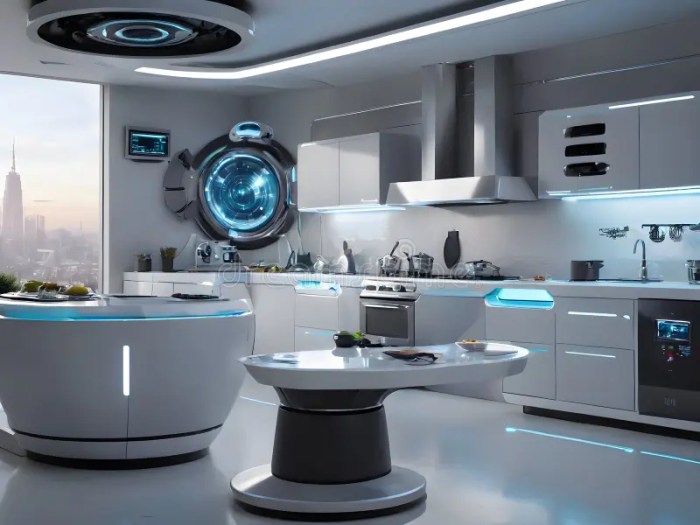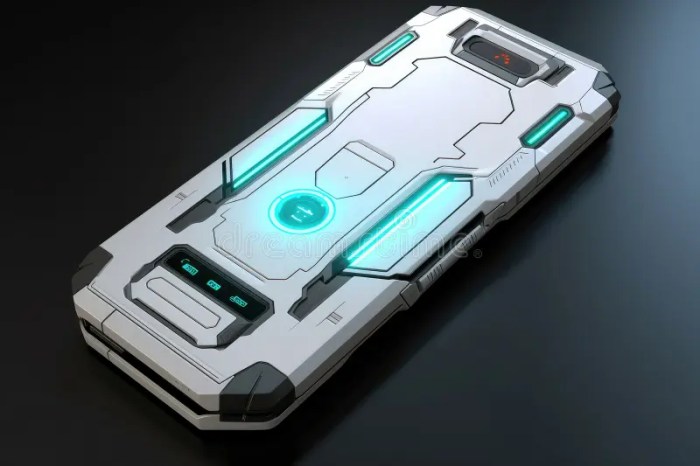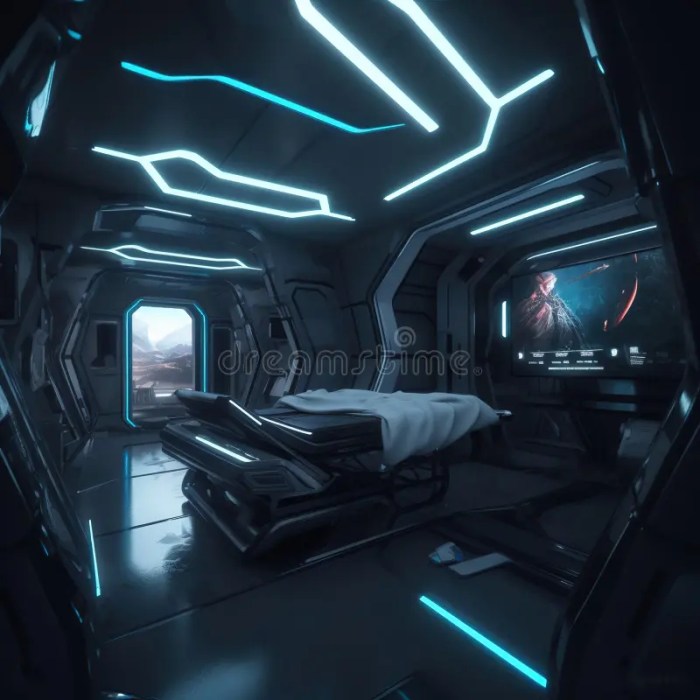Designing in a futuristic style requires more than just sleek lines and glowing interfaces. It demands a deep understanding of technological advancements, societal shifts, and the evocative power of visual storytelling. This exploration delves into the core principles of futuristic aesthetics, examining various subgenres like cyberpunk and retrofuturism, and providing practical tips to translate these concepts into compelling designs. We’ll explore how to integrate advanced technology, unconventional materials, and immersive world-building to create truly captivating futuristic visions.
From crafting believable futuristic environments to designing intuitive user interfaces, we’ll equip you with the tools and inspiration to push the boundaries of design and create truly cutting-edge work. Whether you’re designing a user interface, a physical product, or an entire virtual world, these principles will guide you towards a cohesive and engaging futuristic aesthetic.
Understanding Futuristic Aesthetics

Futuristic design transcends mere technological representation; it’s a reflection of our aspirations, anxieties, and evolving understanding of the world. It encompasses a broad spectrum of styles, each shaped by technological advancements, societal shifts, and cultural interpretations of the future. This exploration delves into the core characteristics of futuristic aesthetics, examining diverse subgenres and illustrating key visual elements through a mood board.
Futuristic design is characterized by a forward-looking perspective, often emphasizing technological innovation and its impact on human life. This manifests in sleek, minimalist forms, advanced materials, and a focus on efficiency and functionality. However, the specific aesthetic varies considerably depending on the underlying narrative or societal context it seeks to portray. The integration of technology is central, but its depiction can range from utopian visions of seamless integration to dystopian portrayals of technological control. Furthermore, societal shifts, such as increased globalization, environmental concerns, and evolving social structures, all influence the visual language of futuristic design.
Subgenres of Futuristic Design
Different subgenres of futuristic design offer distinct interpretations of the future, reflecting contrasting visions of technological progress and societal development. Understanding these nuances allows for a more nuanced and impactful design approach.
- Cyberpunk: Characterized by a gritty, dystopian vision of a high-tech, low-life future. Cyberpunk aesthetics often feature dark, neon-lit cityscapes, advanced technology integrated with decaying infrastructure, and a strong emphasis on social inequality. Think of the rain-slicked streets and towering skyscrapers depicted in films like *Blade Runner* and *Akira*.
- Retrofuturism: This style draws inspiration from the past’s imagined future, often referencing mid-20th-century depictions of futuristic technology and design. It evokes a sense of optimism and wonder, with streamlined shapes, bright colors, and a playful use of technology. Examples can be found in the designs of cars and spaceships from the 1950s and 60s, as well as in the aesthetic of the *Jetsons* cartoon.
- Biopunk: Biopunk focuses on the intersection of biotechnology and society, often portraying a future where genetic engineering and biological manipulation play a central role. The aesthetic often incorporates organic and biomechanical elements, blurring the lines between nature and technology. Examples can be found in films like *Gattaca* and video games such as *Deus Ex*.
Futuristic Aesthetics Mood Board
A mood board provides a visual representation of the core elements that define futuristic aesthetics. The following table organizes these elements into a three-column layout for easy reference.
| Color Palette | Textures | Shapes |
|---|---|---|
| Deep blues, electric greens, neon pinks and purples, metallic silvers and golds. Often contrasted with dark blacks and greys to create a sense of depth and mystery. | Smooth, polished metals; rough, industrial textures; sleek plastics; translucent materials; glowing surfaces. The juxtaposition of contrasting textures creates visual interest and complexity. | Streamlined, aerodynamic shapes; sharp angles and geometric forms; organic, biomorphic shapes; fractal patterns; complex, layered structures. |
Applying Futuristic Principles to Design Elements

Incorporating futuristic aesthetics isn’t just about adding sleek lines and glowing lights; it’s about fundamentally rethinking how we interact with objects and spaces. This involves integrating cutting-edge technology, exploring unconventional materials, and designing intuitive user interfaces that anticipate user needs. The following sections will explore these key aspects of creating truly futuristic designs.
Advanced Technology Integration in Design
The integration of advanced technologies significantly impacts the functionality and aesthetic appeal of futuristic designs. Interactive elements, such as touchscreens, gesture controls, and voice activation, create dynamic and engaging user experiences. Augmented reality (AR) overlays digital information onto the real world, enhancing the user’s perception and interaction with the designed object. Artificial intelligence (AI) can personalize experiences, predict user needs, and adapt designs in real-time, leading to a more seamless and intuitive interaction. For example, a futuristic smart home might use AI to adjust lighting and temperature based on occupancy and user preferences, creating a personalized and comfortable environment. AR could overlay information about artwork or furniture onto a room, allowing users to visualize different design options before making a purchase.
Unconventional Materials and Textures in Futuristic Design
The choice of materials significantly contributes to the overall aesthetic and functionality of a futuristic design. Moving beyond traditional materials opens up exciting possibilities for visual appeal and performance.
Five innovative materials and their aesthetic impact:
- Bio-luminescent materials: These materials emit light organically, creating a soft, ethereal glow that evokes a sense of otherworldly beauty and technological advancement. Imagine furniture that softly illuminates a room or clothing that subtly changes color based on the wearer’s mood.
- Aerogels: Extremely lightweight and porous, aerogels offer unique textural qualities. Their translucent nature and ability to trap light create a visually stunning effect, perfect for architectural elements or lightweight, high-performance products.
- Graphene: Known for its exceptional strength and conductivity, graphene can be incorporated into various designs to create sleek, durable surfaces with interactive capabilities. Its dark, metallic sheen adds a futuristic touch.
- Shape-memory alloys: These alloys can change shape in response to temperature or electrical stimulation. This allows for dynamic and responsive designs, such as self-adjusting furniture or clothing that adapts to the wearer’s body. The transformation itself can be a visually striking feature.
- Self-healing polymers: These materials can repair minor scratches and damage autonomously, enhancing durability and longevity. Their ability to “heal” adds an element of futuristic sophistication and reduces the need for constant maintenance.
Futuristic User Interface Designs
The following table illustrates three futuristic UI designs for a common everyday object: a coffee maker. Each design focuses on different aspects of user experience and technological integration.
| Design | Functionality | User Experience | Visual Description |
|---|---|---|---|
| Holographic Interface | Voice-activated brewing, customizable settings (strength, temperature, milk frothing), real-time brewing progress display. | Intuitive voice control, visually engaging holographic display showing brewing process and options. | A sleek, minimalist coffee maker with a small projector that displays a holographic interface above the machine. The interface shows various options in a clean, easily understandable format, with subtle animations. |
| Touchscreen Control Panel | Touchscreen control for brewing options, customizable profiles, connectivity to smart home systems for scheduling. | Simple and direct touch interaction, customizable profiles for preferred brewing settings. | A coffee maker with a large, high-resolution touchscreen on the front panel. The interface features large, clear icons and easy-to-navigate menus. |
| Minimalist Haptic Feedback | Minimalistic design with haptic feedback for confirmation of actions, intuitive button layout, automatic cleaning cycle. | Subtle yet informative haptic feedback, minimizing visual clutter and maximizing efficiency. | A sleek, button-based interface with subtle haptic feedback to indicate successful actions. The buttons are elegantly integrated into the machine’s design. |
Creating a Cohesive Futuristic Vision
A compelling futuristic aesthetic isn’t just about shiny chrome and flying cars; it’s about creating a believable and immersive world. This requires a strong narrative foundation and careful consideration of how design elements contribute to a cohesive whole. A consistent vision ensures that every detail, from the architecture to the user interface, reinforces the overall feeling and story of your futuristic setting.
A cohesive futuristic vision is achieved through effective storytelling and world-building. This means establishing a clear narrative context for your design, defining the societal structures, technological advancements, and environmental factors that shape the world you’re creating. This narrative then informs the design choices, ensuring a unified and believable aesthetic. Methods for creating a believable and engaging futuristic setting rely on consistent application of established design principles within the defined world’s context.
World-Building Through Design Elements
Creating a believable future involves more than just adding futuristic elements haphazardly. It requires careful consideration of how different design elements interact and contribute to the overall atmosphere. For instance, the architecture of a city reflects its technological capabilities and societal values. Similarly, the clothing worn by the inhabitants reflects their culture and lifestyle. Consider the implications of technological advancements on everyday life and how this translates into the design of objects, spaces, and interfaces. For example, ubiquitous AI integration might lead to seamless interfaces embedded in everyday objects, while resource scarcity might influence the use of sustainable and recyclable materials.
A Futuristic Cityscape: Neo-Kyoto
Let’s imagine Neo-Kyoto, a futuristic city built on the ruins of ancient Kyoto, Japan. The city is a harmonious blend of old and new, where towering skyscrapers of polished obsidian and bioluminescent flora intertwine with preserved temples and traditional gardens.
The air hums with the quiet efficiency of advanced energy grids, a subtle, almost imperceptible thrum that vibrates beneath your feet. The sky, perpetually twilight due to a sophisticated system of atmospheric control, is painted with streaks of neon light from holographic advertisements and the shimmering aurora borealis-like effects generated by the city’s energy systems.
The streets are a mesmerizing blend of high-speed maglev trains gliding silently through elevated pathways and traditional rickshaws, powered by bio-engineered flora, weaving through pedestrian zones. Buildings seamlessly integrate ancient architectural styles with cutting-edge technology, creating a unique aesthetic that is both futuristic and deeply rooted in its history.
Soundscape: The city hums with a low, resonant thrum – the combined energy of maglev trains, atmospheric control systems, and the subtle bioluminescence of the flora. The air is punctuated by the gentle whirring of drones delivering packages, the melodic chimes of traditional instruments emanating from restored temples, and the quiet conversations of citizens conversing in a blend of Japanese and technologically enhanced communication systems.
Sensory Details: The city is a feast for the senses. The air is clean and crisp, scented with the delicate fragrance of bio-engineered cherry blossoms. The surfaces are smooth and cool to the touch, a stark contrast to the rough textures of the preserved ancient structures. The city’s inhabitants move with a calm, almost meditative pace, reflecting a society that values both technological advancement and spiritual harmony.
End of Discussion

Mastering futuristic design isn’t just about incorporating shiny gadgets and space-age technology; it’s about creating a believable and engaging experience that resonates with the viewer. By understanding the underlying principles of futuristic aesthetics, thoughtfully integrating advanced technologies, and crafting compelling narratives, designers can create truly immersive and impactful work. This guide provides a foundation for exploring the vast possibilities of futuristic design, encouraging creativity and innovation in the process.